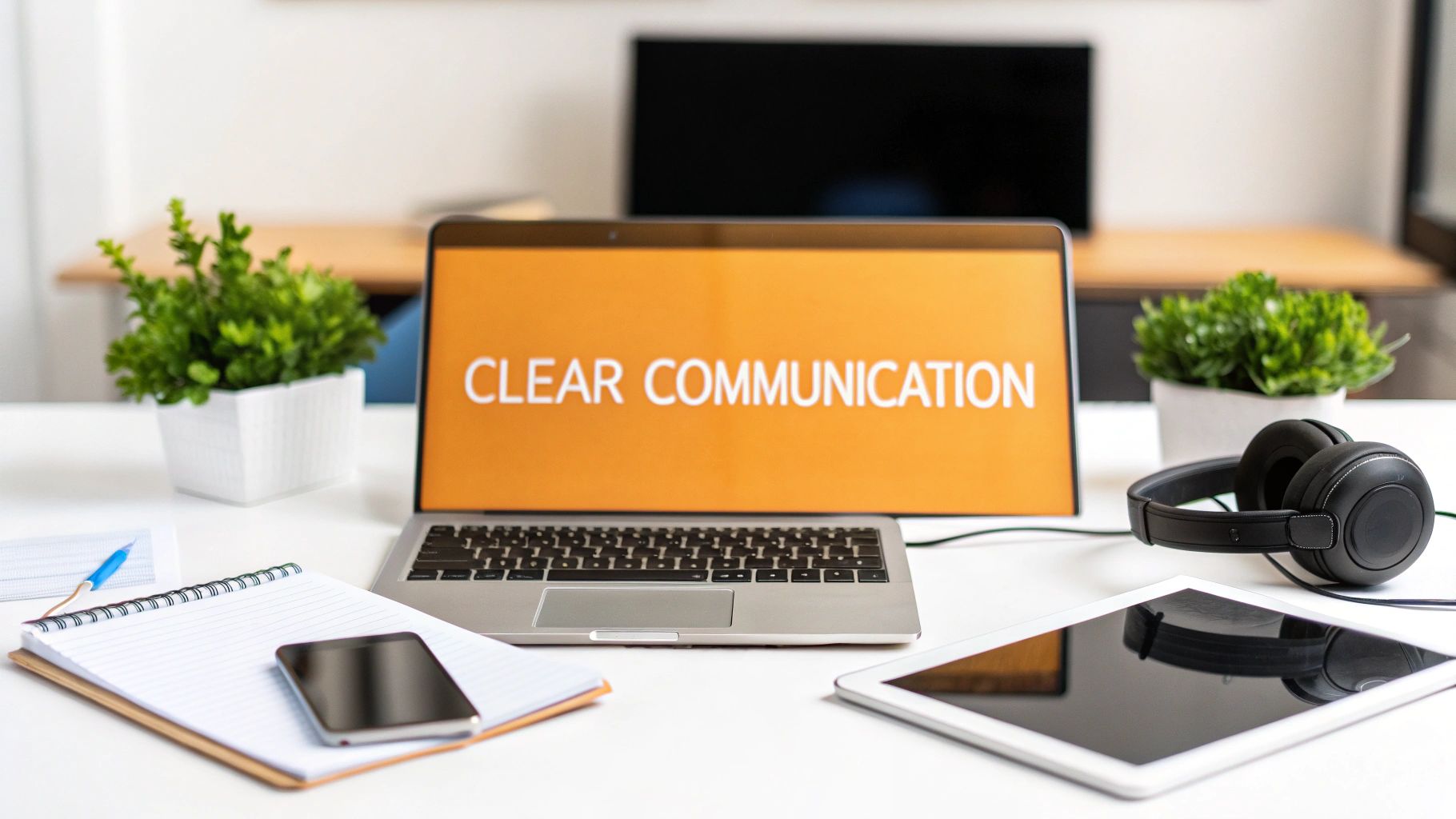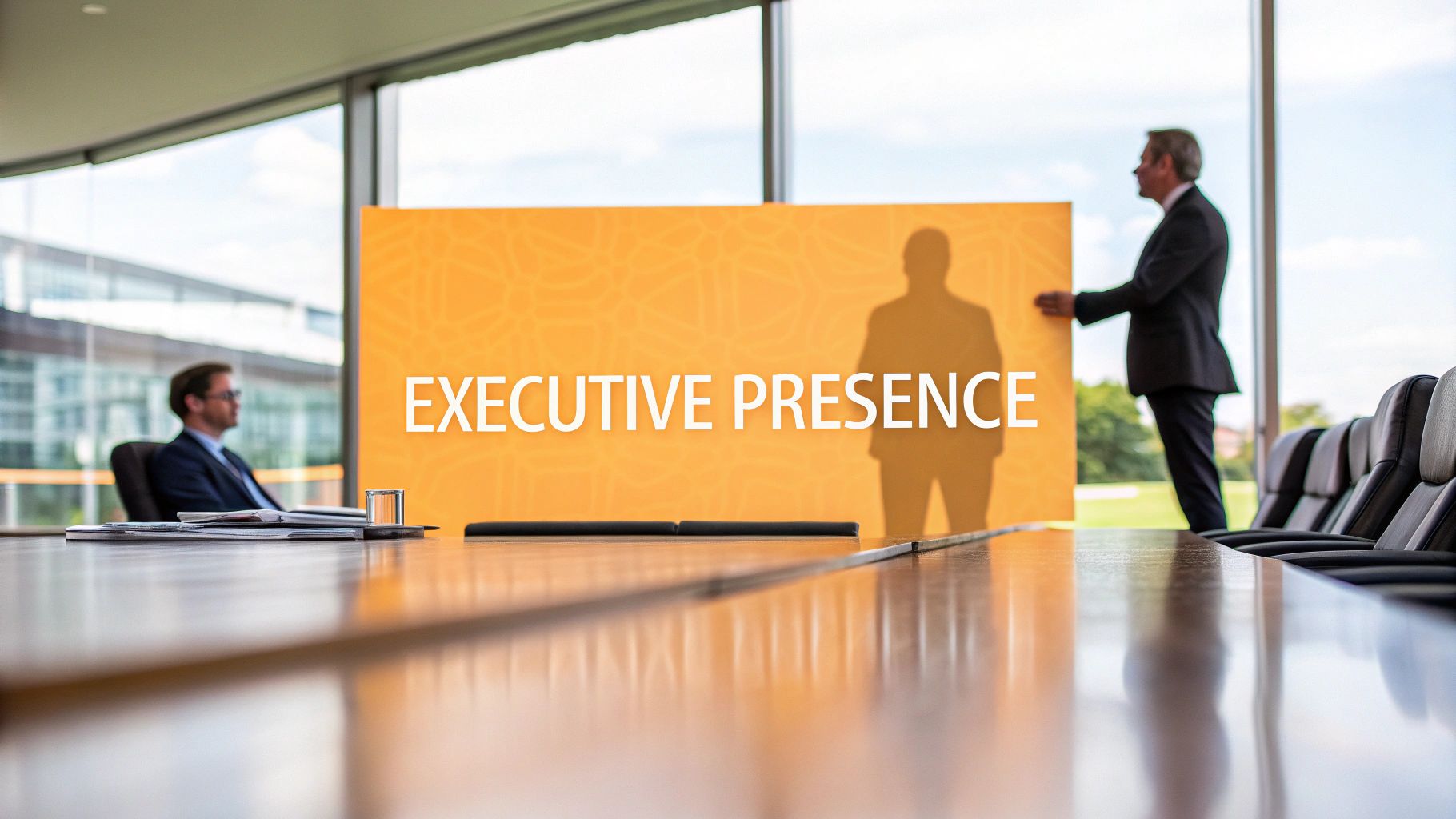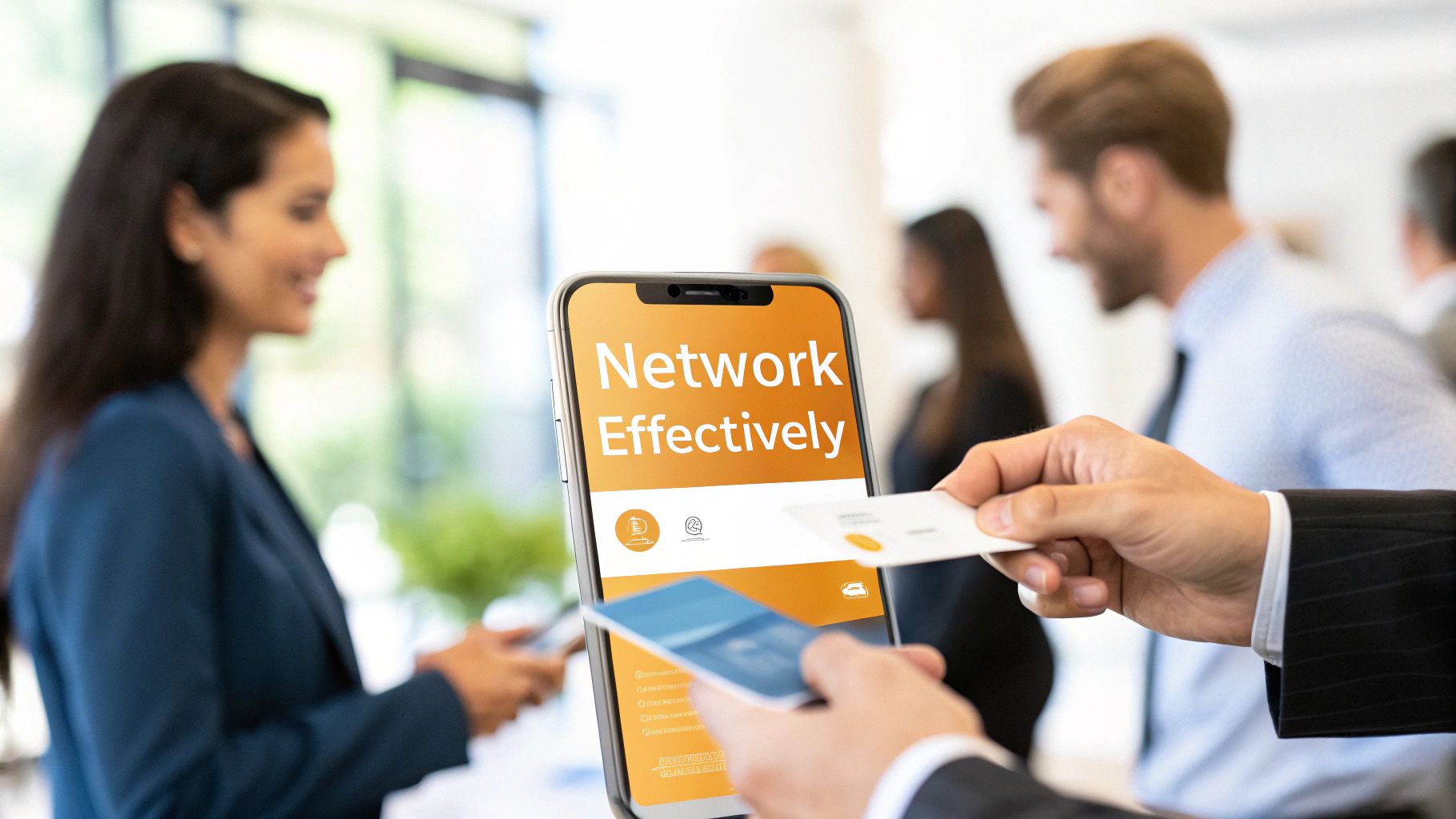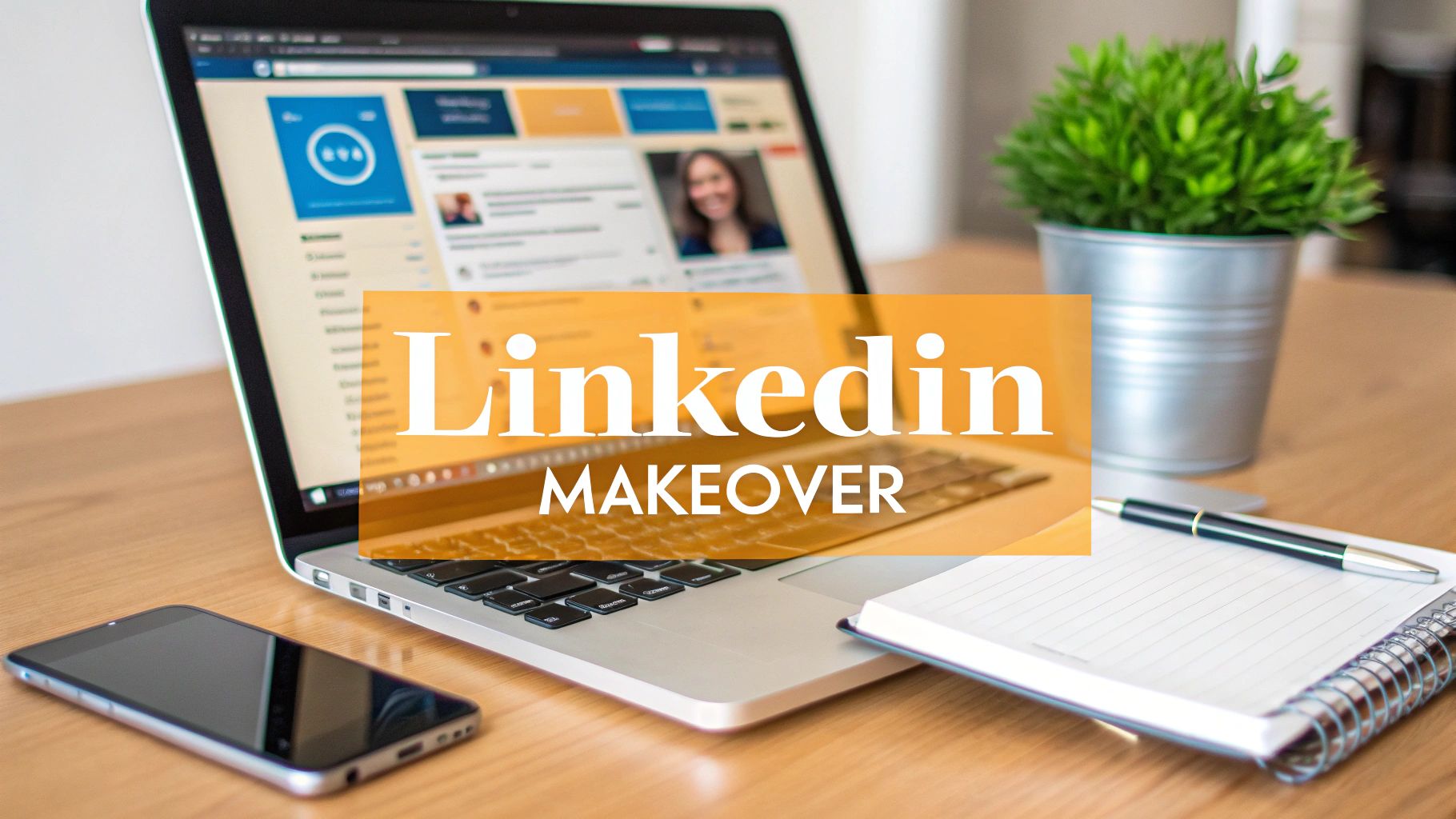Ever felt like you nailed a presentation, only to be met with blank stares? Or sent a crystal-clear email that somehow created total confusion? We’ve all been there. It’s not just what you say, but how you say it, that separates professional growth from frustrating stagnation. Strong communication isn't just a soft skill; it's the operational backbone of every successful project, team, and company. It's the difference between a deal closing and a deal falling apart, between a motivated team and a disengaged one.
Improving how you convey ideas, listen to others, and adapt your message is your biggest untapped asset. It’s a direct lever you can pull to increase your influence, build stronger relationships, and drive better business outcomes. Forget vague theories and generic advice. This article dives straight into a roundup of actionable business communication best practices designed to give you a real-world advantage. We’re talking specific, implementable tactics for everything from mastering nonverbal cues to fostering a culture of honest feedback.
You'll walk away with a clear roadmap to refine your skills, whether you're leading a team, pitching a client, or collaborating on a project. Let's get started.
1. Master the Art of Active Listening (Really)
We all think we’re good listeners, but most of the time, we’re just waiting for our turn to talk. True active listening is a full-contact sport. It means you’re not just hearing the words; you're absorbing the context, paying attention to non-verbal cues, and processing the information before formulating a response. This is one of the most foundational business communication best practices because it stops misunderstandings before they start and shows genuine respect.
How to Implement Active Listening
Instead of just nodding along, put these techniques into practice.
- Paraphrase and Clarify: After someone speaks, repeat their main point in your own words. Try saying, "So, if I'm understanding correctly, you're saying the main roadblock is the budget, not the timeline?" This confirms your understanding and gives them a chance to correct you.
- Ask Open-Ended Questions: Avoid simple "yes" or "no" questions. Instead, ask "how," "what," or "why" to encourage deeper conversation. For example, instead of "Is the project on track?" ask, "What progress have you made on the project this week, and what challenges are you facing?"
- Minimize Distractions: Put your phone away. Close unnecessary tabs on your computer. Make eye contact. This non-verbal communication signals that you are fully present and engaged.
Key Takeaway: Active listening isn't passive. It's a conscious effort to hear not only the words another person is saying but, more importantly, the complete message being communicated. It transforms conversations from simple exchanges into opportunities for genuine connection and clarity.
2. Aim for Radical Clarity and Conciseness
In a world drowning in information, clarity is a superpower. Clear and concise messaging isn't about dumbing things down; it's about respecting the other person's time by delivering your point without unnecessary fluff or jargon. This practice is crucial across all channels, from a quick Slack message to a formal proposal, as it cuts through the noise, minimizes misunderstandings, and ensures your message is received exactly as intended. It’s one of the most efficient business communication best practices you can adopt.
How to Implement Clear and Concise Messaging
Shift your focus from sounding smart to being understood.
- Lead with the Main Point: Don't bury your conclusion at the end of a long explanation. Start with your key message, then provide supporting details. This "pyramid principle" ensures your audience gets the most critical information immediately.
- Use Simple, Direct Language: Swap complex words for simpler ones (e.g., use "use" instead of "utilize"). Write in an active voice ("We will complete the project by Friday") instead of a passive one ("The project will be completed by Friday"). To truly achieve radical clarity in your written output, understanding how to master the art of polished prose through line editing is invaluable.
- Cut Ruthlessly: Read your message and ask, "Does this sentence add value?" If not, delete it. Break long paragraphs into shorter ones or use bullet points to make information scannable, a key skill when you're learning how to write an effective LinkedIn post.
Key Takeaway: Being concise doesn’t mean being brief to the point of being unhelpful. It means conveying the necessary information with the fewest words possible. Make your message easy to understand, and you’ll make it easy for people to act on.
3. Develop a Smart Multi-Channel Communication Strategy
Using the right tool for the job isn't just for construction; it's crucial for communication. A multi-channel strategy means you’re not just defaulting to email for everything. Instead, you're strategically choosing the best platform (email, Slack, video call, etc.) based on the message's urgency, complexity, and audience. This approach is one of the most effective business communication best practices because it prevents message fatigue, ensures clarity, and respects everyone's time and attention.
How to Implement a Multi-Channel Strategy
Move beyond the "one-size-fits-all" approach with these targeted tactics.
- Assign a Purpose to Each Channel: Create clear guidelines for your team. For example, use Slack or Teams for quick, informal questions and real-time collaboration. Reserve email for formal announcements, external communication, or detailed messages that need a paper trail. Use video calls for nuanced discussions where tone and body language are important.
- Centralize Key Information: Don't let important decisions get lost in a fast-moving chat thread. Use a project management tool like Asana or a company wiki to document key outcomes, deadlines, and responsibilities. This creates a single source of truth that everyone can reference.
- Set Clear Expectations for Response Times: Let your team know what to expect. For instance, instant messages might get a reply within an hour, while emails are handled within 24 hours. This reduces anxiety and helps people prioritize their own work. This mirrors the principles of a solid content distribution strategy, where the right message is delivered through the right channel at the right time.
Key Takeaway: A multi-channel communication strategy isn't about using more tools; it's about using the right tools more intelligently. By defining the purpose of each channel, you reduce noise, improve efficiency, and ensure that every message lands with the impact it deserves.
4. Cultivate a Culture of Feedback and Dialogue
Waiting for an annual performance review to share important feedback is like waiting for a tiny leak to become a flood. A culture of feedback and dialogue means creating an environment where open, two-way communication is the norm, not the exception. This is one of the most transformative business communication best practices because it builds psychological safety, accelerates growth, and keeps everyone aligned. It’s about making continuous improvement a part of your daily operations.
How to Implement a Feedback Culture
Moving beyond the dreaded annual review requires intentional effort and structure.
- Use the 'Situation-Behavior-Impact' Framework: To give clear, constructive feedback, state the context, describe the specific action, and explain its effect. For example, "In the client meeting this morning (Situation), you interrupted the client several times (Behavior), which made them seem frustrated and cut the conversation short (Impact)."
- Schedule Regular Check-ins: Don't wait for problems to arise. Implement weekly or bi-weekly one-on-ones dedicated to open dialogue, ensuring feedback flows consistently in both directions. This makes feedback a normal, expected part of the workflow.
- Model the Behavior: Actively ask for feedback on your own performance. Try asking your team, "What is one thing I could do differently to make our meetings more effective?" This demonstrates vulnerability and shows that feedback is a tool for everyone's growth, not just for critiques.
Key Takeaway: A strong feedback culture isn't about calling people out; it's about a shared commitment to getting better, together. By making feedback frequent, specific, and two-sided, you turn communication into a powerful engine for continuous improvement and team cohesion.
5. Develop Your Nonverbal Communication Awareness
We often focus so much on choosing the right words that we forget what our bodies are saying. Research popularized by Dr. Albert Mehrabian suggests that the vast majority of a message's impact comes from nonverbal cues like body language, tone, and facial expressions. Ignoring these signals is like reading a book with most of the pages missing. Developing awareness of your nonverbal communication is one of the most powerful business communication best practices because it ensures your message is received exactly as you intend.

How to Implement Nonverbal Awareness
Start paying attention to the unspoken dialogue in every interaction.
- Mind Your Posture and Gestures: Stand tall, maintain an open posture (uncrossed arms and legs), and use purposeful hand gestures to emphasize your points. This projects confidence and approachability, making people more receptive to your ideas.
- Master Your Tone and Eye Contact: Your tone of voice can completely change a sentence's meaning. Practice modulating your pitch and pace to convey enthusiasm and sincerity. Maintain steady, comfortable eye contact to show you are engaged and trustworthy.
- Observe and Adapt: Pay attention to the nonverbal cues of others. If a client leans back and crosses their arms, they may have an objection. You can then adapt your approach, perhaps by asking a clarifying question to address their unspoken concern.
Key Takeaway: Nonverbal communication is the silent language that speaks volumes. By consciously managing your own body language and learning to read the cues of others, you gain a massive advantage in building rapport, conveying confidence, and ensuring your message truly lands.
6. Tailor Your Message to the Audience
One of the biggest communication mistakes is delivering the same message, the same way, to everyone. A project update for a C-level executive should sound very different from one for a software developer. Stakeholder-focused communication is the practice of tailoring your content, format, and delivery based on the specific needs of your audience, whether they're customers, investors, or your own team. This is a critical business communication best practice because it ensures your message is not just heard, but is also relevant and compelling.
How to Implement Stakeholder-Focused Communication
Before crafting any message, it's paramount to understand who you're speaking to. For insights on identifying your target audience, even in niche B2B contexts, delve into this guide.
- Create Stakeholder Personas: Map out what different groups care about. Your CFO prioritizes budget and ROI, your project manager cares about deadlines and resources, and your customer support team needs to know how changes will affect users.
- Start with Their "Why": Frame your message around what matters most to them. For executives, lead with the bottom-line impact. For the technical team, start with the specific tasks and challenges.
- Choose the Right Channel: Don’t send a long, detailed email to a team that lives in Slack. Executives might prefer a concise memo or a quick presentation. Use the channels your audience already uses and prefers.
Key Takeaway: Effective communication isn't about what you say; it's about what the other person understands. By customizing your approach for each stakeholder, you cut through the noise, build stronger relationships, and drive much better outcomes.
7. Embrace Transparency and Honest Communication
Transparency is more than just a corporate buzzword; it’s a strategic decision to be open, honest, and vulnerable. It involves sharing accurate information openly, including admitting mistakes, uncertainties, and challenges. In an era where trust is currency, this approach demolishes the rumor mill and builds psychological safety, making it one of the most powerful business communication best practices a leader or team can adopt.
How to Implement Transparency
Building a culture of transparency requires conscious effort and consistent action.
- Admit Mistakes and Share Learnings: When something goes wrong, address it head-on. Don't hide it. Explain what happened, what you learned, and the steps you're taking to correct it. This builds credibility far more effectively than projecting false perfection.
- Explain the 'Why' Behind Decisions: Don't just announce a new policy or strategic shift; share the reasoning behind it. When people understand the context, even for unpopular decisions, they are more likely to buy in and feel respected.
- Distinguish Facts from Speculation: Be clear about what is known versus what is still being figured out. Saying, "We know X, but we are still working to determine Y," is far more trustworthy than offering false reassurances or speculative answers.
Key Takeaway: Transparent communication is the foundation of trust. By openly sharing information, admitting faults, and being honest about uncertainties, you create an environment where people feel secure, valued, and connected to the company's mission.
8. Cultivate Emotional Intelligence in Your Communication
Technical skills might get you in the door, but emotional intelligence (EQ) is what builds the bridges inside. EQ is your ability to recognize, understand, and manage your own emotions, as well as perceive and influence the emotions of others. Mastering this is one of the most powerful business communication best practices because it turns potentially volatile conversations into productive ones, helping you build trust and navigate complex social dynamics with grace. It’s the difference between reacting and responding.
How to Implement Emotional Intelligence
Developing EQ is an ongoing practice, not a one-time fix. Start with these techniques.
- Practice the Strategic Pause: When a conversation gets heated, don't react immediately. Take a deep breath and pause. This small gap gives you time to move past a purely emotional reaction and respond with intention and clarity.
- Validate Before You Solve: Before jumping to solutions, acknowledge the other person's feelings. Try saying, "It sounds like you're feeling incredibly frustrated with this delay. I can understand why." This simple act of validation can de-escalate tension and makes the other person more receptive to your ideas.
- Use "I" Statements: Frame your feelings from your own perspective to avoid sounding accusatory. Instead of "You're making this process confusing," say, "I'm feeling confused about the next steps and would appreciate some clarification."
Key Takeaway: Emotional intelligence isn't about suppressing emotions; it's about understanding them as valuable data. By recognizing and managing emotions in yourself and others, you can communicate more empathetically, build stronger relationships, and lead with greater influence.
9. Set Standards with Written Communication Templates
Consistency is the secret ingredient to professionalism. Establishing clear standards and templates for written communication, from emails to formal reports, eliminates guesswork and ensures everyone in the organization presents a unified, polished front. This isn't about stifling creativity; it’s about creating a predictable, efficient framework so your message, not the formatting, takes center stage. This is one of the most scalable business communication best practices because it builds brand integrity and makes information easier to digest.
How to Implement Written Standards
Standardization saves time, reduces errors, and makes your entire team look good.
- Create a Central Template Library: Build a shared folder with pre-approved templates for common documents like project proposals, client updates, meeting agendas, and internal memos. This ensures everyone starts from the same high-quality baseline.
- Develop a Simple Style Guide: You don't need a 100-page manual. A one-page document outlining rules for tone of voice, preferred terminology (e.g., "client" vs. "customer"), and basic formatting like font and heading styles can work wonders for consistency.
- Establish Email Conventions: Standardize email subject lines for specific purposes (e.g., "[PROJECT] Update: [Date]"). Set clear expectations for professional signatures and appropriate response times to streamline inbox management for everyone.
Key Takeaway: Written communication standards are not about restrictive rules; they are about creating clarity and efficiency. By providing a consistent framework, you empower your team to communicate more effectively, reduce time wasted on formatting, and present a cohesive, professional image in every document.
10. Inclusive and Accessible Communication
Effective communication isn’t just about what you say; it’s about ensuring everyone can hear and understand your message. Inclusive communication is the practice of creating content that’s accessible to all employees, regardless of physical abilities, neurodiversity, or language background. This is one of the most vital business communication best practices because it removes barriers, fosters a sense of belonging, and ensures critical information reaches its entire intended audience.

How to Implement Inclusive Communication
Moving beyond good intentions requires deliberate action. Start by integrating these practices into your daily workflow.
- Make Digital Content Accessible: Use alt text for all images in emails and documents so screen readers can describe them. Add captions and provide transcripts for all video and audio content. Structure documents with clear headings (H1, H2, etc.) to make them navigable for everyone.
- Use Clear and Simple Language: Avoid jargon, acronyms, and complex sentence structures that might exclude people with different levels of language proficiency or neurodiverse individuals. Aim for clarity and directness, as seen in government agencies that adopt plain language guidelines.
- Provide Multiple Formats: Don't rely on a single channel. Offer important information in various ways, such as a video call, an email summary, and an accessible PDF document. This gives people the flexibility to engage with the content in the way that works best for them.
Key Takeaway: Inclusive communication isn't an afterthought or a compliance checkbox. It’s a strategic approach to ensure that every single person in your audience feels seen, respected, and fully informed, leading to higher engagement and a stronger, more equitable workplace culture.
Business Communication: 10 Best Practices Comparison
| Practice | Implementation Complexity 🔄 | Resource & Time Requirements ⚡ | Expected Outcomes & Impact 📊 | Effectiveness / Best For ⭐ | Quick Tip 💡 |
|---|---|---|---|---|---|
| Active Listening | Moderate — ongoing habit building and facilitator skill | Low — time per interaction; occasional training | 📊 Fewer misunderstandings; better info gathering; stronger rapport | ⭐ High — team alignment, client discovery | 💡 Eliminate distractions; paraphrase and ask open questions |
| Clear and Concise Messaging | Low — process-focused (editing & style) | Low — editing time, style guides | 📊 Faster decisions; fewer clarifications; clearer expectations | ⭐ High — executive updates, documentation | 💡 Lead with the main point; use active voice |
| Multi-Channel Communication Strategy | High — policy, integration, governance | Medium–High — tools, integrations, management | 📊 Broader reach, redundancy, improved inclusion | ⭐ High — distributed/hybrid organizations | 💡 Define channel purpose and centralize key announcements |
| Feedback and Dialogue Culture | High — cultural change and consistent cadence | High — regular one‑on‑ones, training, systems | 📊 Accelerated development, early issue detection, higher retention | ⭐ High — performance management & development | 💡 Use SBI framework; schedule recurring check‑ins |
| Nonverbal Communication Awareness | Moderate — self‑awareness and practice | Low–Medium — training, coaching, practice | 📊 Increased credibility, clearer emotional signals | ⭐ High — face‑to‑face and presentation settings | 💡 Maintain open posture; record presentations for review |
| Stakeholder‑Focused Communication | High — audience analysis and tailored content | Medium — preparation, possible translations | 📊 Greater buy‑in, targeted influence, reduced resistance | ⭐ High — launches, change management, executive briefings | 💡 Create stakeholder personas and start with the "why" |
| Transparency & Honest Communication | Moderate — requires judgment and governance | Low — leader commitment; communication forums | 📊 Builds trust, reduces rumors, improves culture | ⭐ High — crisis response and trust-building | 💡 Admit mistakes quickly and explain corrective actions |
| Emotional Intelligence in Communication | High — self‑work, coaching, ongoing practice | Medium — assessments and coaching support | 📊 Better conflict resolution, team cohesion, leadership impact | ⭐ High — difficult conversations and leadership roles | 💡 Pause before responding; use "I" statements and validate feelings |
| Written Communication Standards & Templates | Moderate — design and maintenance of standards | Low–Medium — templates, training, periodic updates | 📊 Consistency, faster drafting, easier onboarding, compliance | ⭐ High — scalable document production and compliance | 💡 Store templates centrally and include clear examples |
| Inclusive & Accessible Communication | Moderate — standards, testing, tooling | Medium — captions, alt text, multiple formats | 📊 Wider reach, legal compliance, increased belonging | ⭐ High — diverse workforces and public communications | 💡 Provide captions/transcripts, alt text, and multiple formats |
Putting It All Together: Your Communication Toolkit
We've just unpacked a treasure trove of communication strategies, from the focused power of active listening to the broad-reaching impact of an inclusive messaging strategy. It’s easy to look at a list this comprehensive and feel a bit overwhelmed. Where do you even start? The key isn’t to master all ten of these business communication best practices overnight. Instead, think of this as building your personal communication toolkit.
Your goal is to become a more intentional, effective, and empathetic communicator, one conversation, email, and presentation at a time. Each practice we've discussed, whether it’s refining your nonverbal cues or establishing clear written standards, is a powerful tool. Some situations might call for the precision of a stakeholder-focused message, while others will depend entirely on your emotional intelligence to navigate a sensitive topic. The real magic happens when you start combining these tools fluidly.
From Theory to Daily Practice
So, how do you make this stick? Don't try to boil the ocean. Pick one or two practices that resonated most with you or address a current challenge you're facing.
- Is your team engagement low? Double down on creating a robust feedback and dialogue culture. Make it a personal mission to solicit and act on feedback this week.
- Are your emails causing confusion? Focus on clear and concise messaging. Before you hit "send," re-read your draft and ask yourself: "Can I say this with fewer words?"
- Feeling disconnected from your clients? Re-evaluate your communication through a stakeholder-focused lens. Ask more questions and truly listen to their needs before you propose solutions.
The common thread weaving through all these strategies is awareness. It's about shifting from communication on autopilot to communication with a purpose. It’s about understanding that every interaction is an opportunity to build trust, drive clarity, and foster stronger relationships. Mastering these skills isn't just about avoiding misunderstandings; it’s a direct investment in your professional growth, your team’s cohesion, and your organization’s bottom line.
By consciously applying these business communication best practices, you’re not just sending messages, you’re building bridges, inspiring action, and creating a more transparent and productive environment. Keep this toolkit handy, practice consistently, and watch as you transform not only how you communicate, but also how you lead, collaborate, and succeed.
As you implement these best practices, ensuring your communications are both clear and secure is paramount. RedactAI helps you maintain confidentiality by automatically detecting and redacting sensitive information from your documents and images before they are shared. Secure your professional conversations and protect your data with one simple tool by visiting RedactAI today.





























































